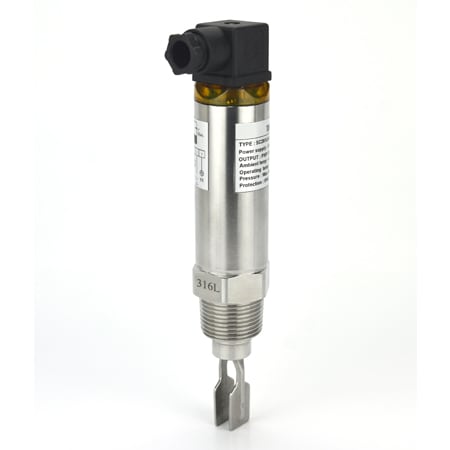1-800-663-4209 | Welcome to our new website, found an issue or bug? Please report it here

LTUM1-3014-Series
316 SS Mini-Type Tuning Fork Level Switch
Models In Stock
- Fork Level Switch with PNP/NPN Output
- Wide voltage supply range 12-55Vdc
- No frequent calibration required, easy-to-use, sturdy and durable design. High/low failure safe mode, safe and reliable.
- Sensitivity adjustment is available for different densities of media.
LTUM1-3014-Series
From
$
275.00
Models In Stock
Product Overview
- Approvals CE, RoHS, UKCA
- Density, Max 0.7g/cm ³
- Electrical Connection DIN 43650 A (solenoid valve)
- Enclosure Ratings IP65
- Materials 304 Stainless Steel, 316 Stainless steel
- Materials, Wetted 316 Stainless Steel
- Media Compatibility Clean process / cooling water, Oils / lubricants, Organic solvents
- Number of Wires 3
- Operating Pressure, Max 600 psi
- Operating Temperature, Max 80 °C
- Operating Temperature, Min -40 °C
- Probe Length 1.625 in
- Process Connection Size 3/4 in
- Process Connection Type NPT Male
- Process Temperature, Max 100 °C
- Process Temperature, Min -40 °C
- Series ID LTUM1-3014-Series
- Supply Power Type DC
- Supply Voltage 12 to 55 Vdc
- Vibration 1 KHz
- Viscosity Range 1 to 10000 cSt
The piezoelectric component is used to drive the tuning fork and feedback signal, which produces the resonation on the fork. When the fork comes into contact with a material, the fork will release some frequency signal as feedback. It will be converted into the output of the contact signal when the circuit detects the frequency decrease of the signal.
The product relies on the damping effect by covering the testing material on the tuning fork which reduces the vibration frequency of the tuning fork and outputs a switch signal. Therefore, there is no signal amplification circuit inside, which can eliminate the trouble of frequent sensitivity adjustment due to the material change.
The product relies on the damping effect by covering the testing material on the tuning fork which reduces the vibration frequency of the tuning fork and outputs a switch signal. Therefore, there is no signal amplification circuit inside, which can eliminate the trouble of frequent sensitivity adjustment due to the material change.
PDFs & Manuals
Show Ratings & Reviews